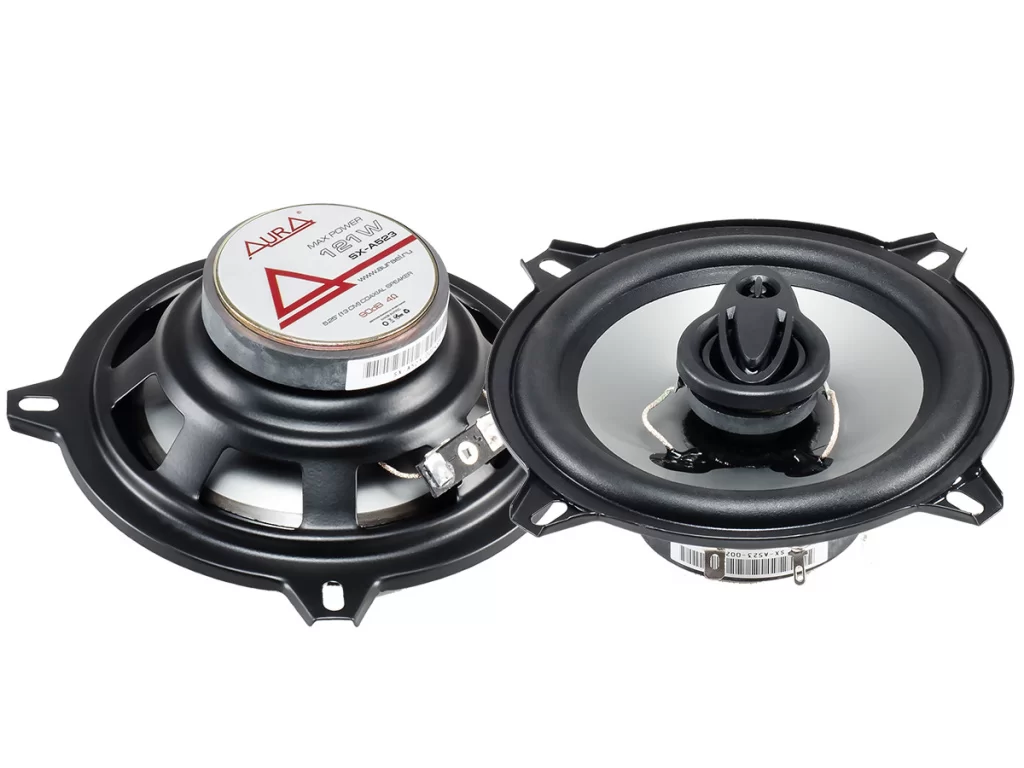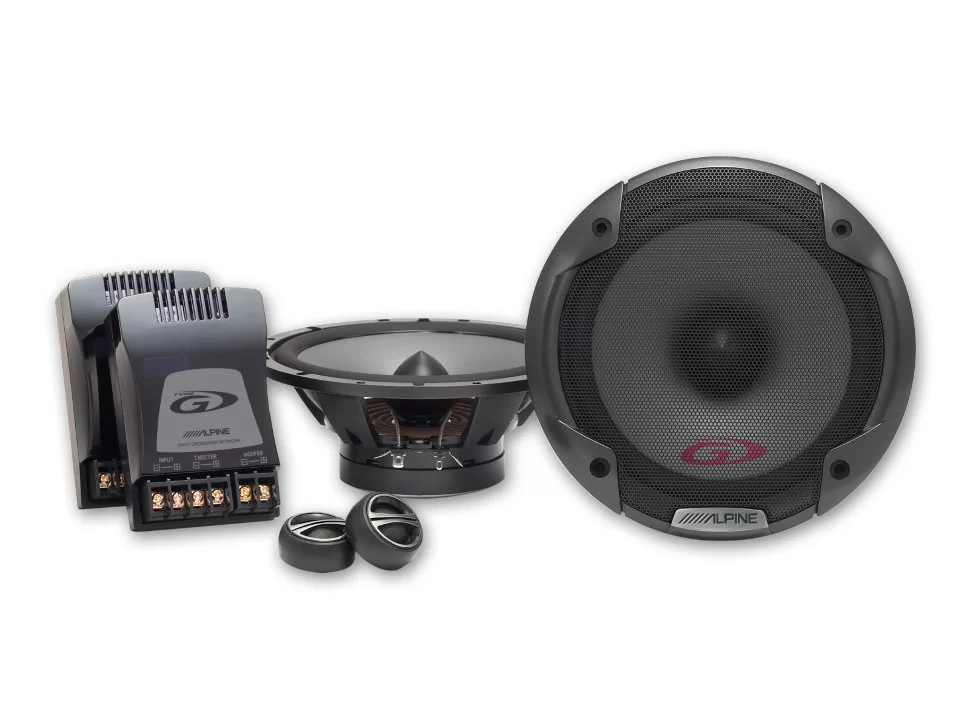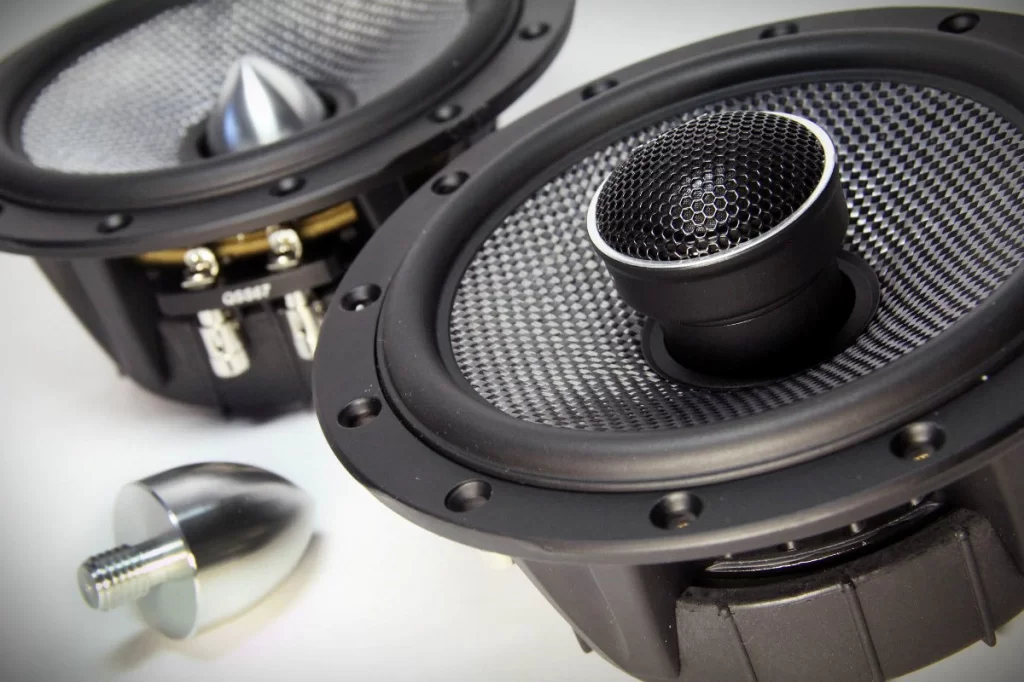Good music requires at least a decent sound. I would like the low frequencies (bass) to be deep and literally physically palpable, and the mids and highs to be enveloping, detailed and creating a realistic scene. And this is true for any acoustics, not just home. Motorists also want to enjoy good music.
And that is why car audio manufacturers are constantly implementing new technologies into the usual methods of sound production. Speakers are evolving, becoming more and more perfect and pleasing to the ear. Analog signal transmission technologies give way to digital ones, and the usual acoustic systems change their configuration.
As a result, there are two main types of car speakers on the market now — component speakers and coaxial speakers. Determining which one is better to use is quite difficult. And often, when replacing acoustics, car owners ask themselves the question — how do component speakers differ from coaxial ones, in fact? In this article, we will analyze both of these types and tell you which one to choose.
coaxial speakers

Let’s start the review with coaxial car acoustics, since it is characterized by maximum simplicity and wide distribution. Most mid-range and high-end car manufacturers install just such a sound system. In addition to the above advantages, it is also characterized by a low price, which is often decisive.
The acoustic design of a coaxial system implies a common pool of low, medium and high frequencies. That is, one or more equivalent cables come out of the radio, simultaneously transmitting a signal. On them you can “pick up” at least a low-frequency emitter, even a high-frequency one.
It is thanks to this that the maximum simplicity of design is achieved. But this design is the main disadvantage of coaxial speakers. If you set them up incorrectly, then instead of high-quality surround sound, the output will be an incomprehensible mishmash in which “subwoofers” try to reproduce high sound, and “tweeters” try to reproduce bass.
To protect against this effect, models with frequency filters are used. This small chip separates the signal entering the speaker and separates unsuitable lines from it. So, “tweeters” with a frequency filter reproduce only high sounds, and without it — both high and low.
The frequency filter can be set in different ways. Placing it on each speaker is just one option. It can also be built directly into the car radio or placed separately — at the “root” of the sound system (that is, the signal from the player enters it, is divided and sent to separate speakers).
But all these shortcomings fade before the main advantage of coaxial speakers — ease of installation. Often they are produced for certain car models and are ideally sized for placement in special grooves on the interior trim (for example, on plastic door interior panels). That is why the replacement of acoustics is carried out as quickly as possible and often without contacting service centers, with your own hands.
Key advantages of coaxial speakers:
-
Ease of installation. Speakers (acoustic heads) are often produced for certain car models and therefore are easily mounted, including independently and without contacting a service center;
-
Low price. Acoustics is inexpensive, so its replacement will not hit your pocket;
-
Ready acoustic systems. No further configuration is required, and many speakers support plug-and-play installation.
Key disadvantages of coaxial speakers:
-
Without a good frequency filter, the sound turns into an indistinct “porridge”. It is required to separate the signal. This can be done both on the speaker or car radio itself, and by installing a separate frequency filter;
-
Coaxial cable often suffers from “pickup”. Electromagnetic fields from some parts of the car, such as the alternator, interfere with the wire. You can get rid of this if you use shielded or “armored” coaxial wire.
In general, coaxial speakers are a solution for those who just want to listen to music in the car without worrying too much about the sound quality. Due to the ease of installation and low price, they are suitable for self-replacement. And if you install a good frequency filter, then you will be able to achieve a more or less pleasant, surround sound.
Component columns

Component speakers, as the name implies, are focused on connecting to a multi-way speaker system. True, in cars, as a rule, only two lanes are used. But this is already enough to create surround and detailed sound.
However, it is not enough just to buy component acoustics to enjoy a good stage and high sound detail. We’ll have to “tinker” with its installation. As a rule, speakers need to be placed in certain places in the car. Mid-frequency acoustic heads are installed in the doors, high-frequency “tweeters” — on the front or rear pillars, but you will have to tinker with the subwoofer.
The main problem with component acoustics is that not all cars natively support its installation. You will have to cut the holes for the speakers yourself. And with a subwoofer and do “conjure”. So, often it is placed in the trunk, not only so that the whole area enjoys the rhythmic line of some drum and bass track at 7 am on Sunday, but simply because there was a place for it in the cabin.
Therefore, installing component speakers is not a task for an independent solution. Typically, car owners turn to special detailing and car audio studios, whose specialists determine how best to lay cables and where to place acoustic heads so that the driver can enjoy detailed and surround sound.
Component speakers also use an external frequency splitter. Only this is not a filter, but a crossover. It gently redirects the signal without clipping it, which maintains high detail in each of the frequency bands.
This configuration allows you to experiment to create exactly the sound stage that is ideal for the car owner. Do you want an assertive sound “like at a concert”? “Tweeters” are placed on the front pillars. Want an enveloping sound that helps you relax and concentrate on the road? “Tweeters” are placed on the rear racks.
It should be noted that the use of component acoustics in ultra-compact cars like Daewoo Matiz or Smart ForTwo is not justified. Due to the small size of the cabin, the sounds will be distorted, which will lead to deformation of the stage. Yes, and some frequencies will be felt too high or too low.
Key benefits of component speakers:
-
Delivers rich, detailed and realistic sound. With them, the scene does not turn into a “porridge”, you can hear every note. At the same time, the sound quality does not depend on your favorite genre — both symphony concerts, and popular music, and some dubstep or hard rock oversaturated with low frequencies will equally impress;
-
You can experiment with the stage, providing exactly the surround sound you want — from assertive to enveloping.
Key disadvantages of component speakers:
-
Difficult to install. Most often, cars are not equipped with suitable grooves for mounting speakers; you will have to cut them yourself. Yes, and the cables will have to be pulled under the interior trim;
-
High price. Not only the speakers themselves are expensive, but also playback devices with a crossover that distributes the signal between the acoustic heads;
-
Not suitable for installation in ultra-compact vehicles. More precisely, you can place them, but this will not be justified — in a small cabin, frequency aberrations will be observed.
Component speakers are the solution for those who need high quality sound and are willing to pay for it. Moreover, it is not only about money, but also about making irreparable modifications to the design of the car. In addition, to install them, it is recommended to contact an auto detailing or car audio studio.
Comparison of component speakers and coaxial
So, component speakers are acoustics for those who are willing to pay for high-quality sound, and coaxial speakers are a solution for economical people. But their differences do not stop there.
|
|
|
|
|
Where do they meet
|
Cars of the middle and lower price segments
|
premium cars
|
|
acoustic design
|
General pool
|
Usually two lanes
|
|
Signal separation
|
Frequency filter
|
frequency crossover
|
|
Possibility to connect a subwoofer
|
Limited
|
Yes
|
|
Can be used in small salons
|
Yes
|
Not justified
|
|
Scene creation
|
Relatively flat sound
|
Exceptional surround sound
|
|
Mounting
|
Simple
|
Difficult
|
|
Price
|
Relatively low
|
Relatively high
|
If you want perfect sound, then connecting component speakers is a good solution. But with the installation of acoustics of this type, you will have to “get confused” — up to making irreversible changes to the design of the car. If you need a quick and easy installation (perhaps done by yourself at home), and also want to save money, then you can take coaxial speakers with a good frequency filter.


Добавить комментарий
Для отправки комментария вам необходимо авторизоваться.